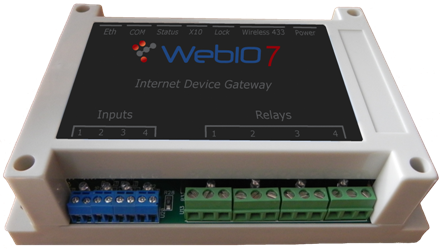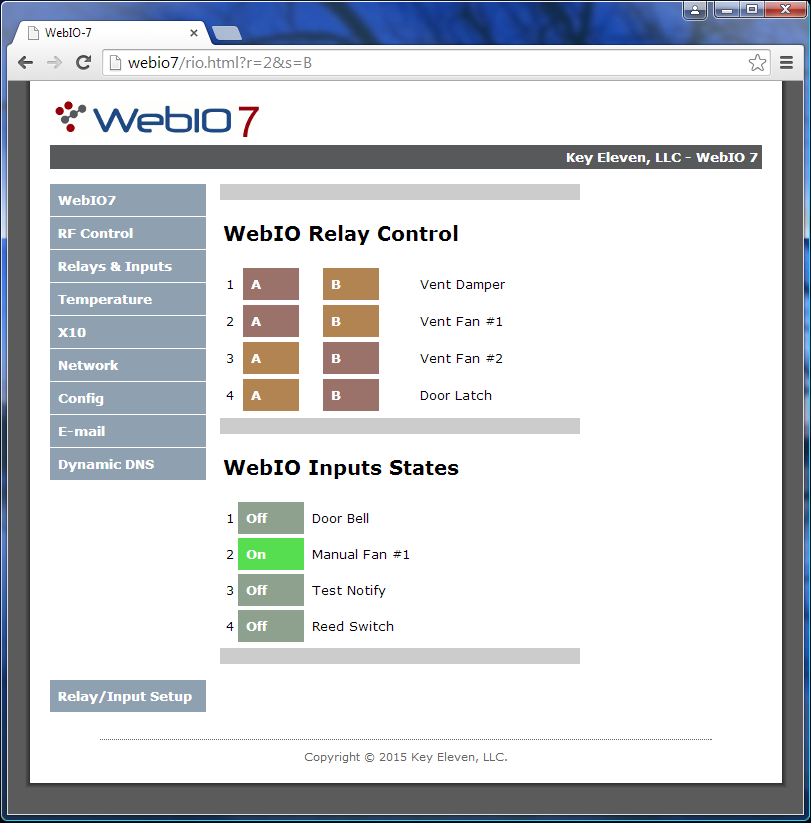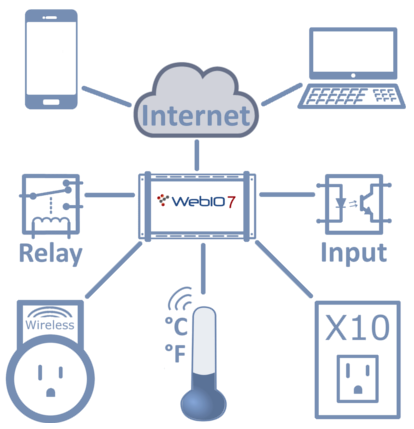WebIO 7
Internet Relay Control
WebIO Internet/web interface give you control of 4 SPDT relays.
These relays can be used to control hardwired devices such as pumps, alarms,
electronic door locks/strikes, etc, with the reliability of hard wiring.
Each Relay has connections "A" and "B" where "A" is a normally closed connection and "B" is normally open.
Using the WebIO Relay/Input web page you can set the state of each relay to "A" or "B".

WebIO-7 relay connections shown above. Each relay uses a 3 contact screwdriver operated terminal block (Green in color). From left to right: Normally Open "B", Common, Nomally Closed "A".

Relays
Above screenshot displays the WebIO7 internal webpage used to directly control and monitor the Relays and Inputs. The relays are numbered 1-4, and can be assigned a label/name. Selecting [A] or [B] sets the relay states, where [A] is the relay Normally Closed (NC) state and [B] is the relay energized Normally Open (NO) state. The relays are single pole double throw (SPDT) non-latching. The relays can be configured to return to last set state upon power up after a power loss. Although this will cause an engerized relay to return to NC "A" state after power loss and then energize to NO "B" state when power returns. The relays can also be set to return to NO "A" state after a power reset.
Inputs
The 4 inputs are displayed 1-4 and can be assined a label/name. Each input displays either an [On] or [Off] block indicatining the input state. Each input requires a voltage of 3.5vdc - 12vdc and a ground connection wired to the inputs screwdriver operated terminal block.
Relay/Input Automation & Notification
WebIO7 automation allows for assigning relay state changes on input state changes and wireless temperature sensor values received.
The inputs can be assigned to control relays, wireless AC outlets and X10 powerline devices.
Input state changes be sent over the TCP/IP network LAN or WAN/Internet using several methods:
- Sent to the WebIO Key-On PC software which provides logging and advanced email notification rules. This email method supports SSL.
- Sent using HTTP to POST/GET it's state changes to your own web server.
- Assinged to an automation rule to send a SMTP email (no SSL)










